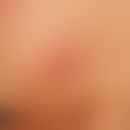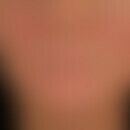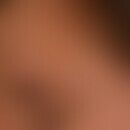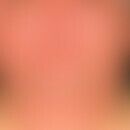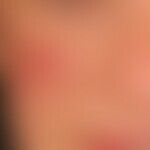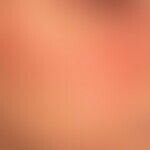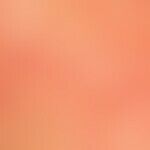Synonym(s)
DefinitionThis section has been translated automatically.
Frequent, chronic, initially recurrent, later persistent disease with centrofacial telangiectasias, persistent or flush-like onset, frequently temperature-induced or psychologically induced erythema, as well as prolonged inflammatory episodes with follicular and parafollicular papules and plaques, follicular papulopustules and pustules. In severe cases, the clinical picture is complicated by connective tissue and sebaceous gland hyperplasia (phyma). A relapsing course is characteristic.
Occurrence/EpidemiologyThis section has been translated automatically.
In a population of working people over the age of 30, a prevalence of up to 22% was reported. This would make it the most common skin disease of all. Women are more frequently affected than men. This statement is disputed in various studies. This statement is disputed in various studies (apparently there are worldwide regional differences in the prevalence pattern). Rosacea is more severe in men than in women.
You might also be interested in
EtiopathogenesisThis section has been translated automatically.
- Not fully clarified.
- Genetic predispositions with abnormalities in innate immunity (these concern the antimicrobial peptide cathelicidin and its activator kallikrein 5) and concomitant vascular dysfunction are considered the most likely cause. This results in a vicious circle of dermal damage, vasodilatation, vascular damage and inflammatory tissue reaction.
Signaling neuropeptides such as pituitary adenylate cyclase-activating polypeptide-38 and calcitonin gene-related peptide (CGRP) play a role here. Interestingly, there is a proven epidemiologic overlap between rosacea and migraine, suggesting a possible pathophysiologic link. Both diseases have been associated with elevated plasma CGRP levels. A future therapeutic option is erenumab, an antibody directed against the calcitonin gene-related peptide receptor (Wienholtz NKF et al. 2024).
- Trigger factors include UV rays, X-rays, heat, cold, excitement, coffee, alcohol, tea, hot spices (pepper, curry), temperature fluctuations, external (too oily) cosmetics and hormonal fluctuations (menstruation, pregnancy, menopause).
- The influence of Helicobacter pylori is controversially discussed.
- The etiopathogenetic role of Demodex folliculorum (the hair follicle mite) in the development of papulo-pustular rosacea is still open to debate. The extent to which the good therapeutic effect of local antiscabiosa (1% ivermectin cream) correlates with this finding remains to be seen.
ManifestationThis section has been translated automatically.
Occurs mainly in the 4th and 5th decade of life.
ClinicThis section has been translated automatically.
Stage II rosacea. An acne-like, inflammatory clinical picture develops on a facial erythema that has existed for years, initially very variable and later persisting and is interspersed with telangiectasia (stage I rosacea). This leads to the formation of solitary, disseminated or even grouped, inflammatory reddened papules, papulopustules and pustules that persist for days or weeks, possibly containing fine-lamellar scaling, follicular, sterile or normal follicular flora and are only slightly painful. There is a variable feeling of tension in the facial skin. Mostly scarless healing of the individual "pimples".
In contrast to acne, comedones are always absent.
In the course of months and years the initially rather discreet inflammatory symptoms increase. The facial skin becomes increasingly edematous. This leads to an intermittent accumulation of papulo-pustules. The individual papules and pustules become larger, are distributed rather asymmetrically in the area of the cheeks (but the other parts of the face can also be affected) and require a longer period of time to heal.
In the following period the skin becomes increasingly firm. This leads to aggregation of the inflammatory papules and papulo-pustules, to larger, bumpy, firm, red, scaly and crusty inflammatory beds.
Differential diagnosisThis section has been translated automatically.
Acne papulopustulosa, perioral dermatitis, allergic or toxic contact eczema, gram-negative folliculitis, demodicosis.
TherapyThis section has been translated automatically.
S. rosacea
Since June 2015, a 1% ivermectin cream (Soolantra®) has been approved for rosacea papulopustulosa, which was rated better in a larger collective compared to a 0.75% metronidazole cream. The Topicum is applied in a 1st cycle 1 x daily for 4 months. If necessary, this cycle can be repeated. In the extension study AATRACT a long-term effect could also be proven.
Alternatively a 15% azelaic acid gel (alternatively 10% cream) can be used (Skinoren®).
Alternatively and in addition a 0.3% brimovidine gel (Mirvaso®) is available for the treatment of facial erythema.
LiteratureThis section has been translated automatically.
S. Rosacea
- Stein Gold Let al. (2014)Ivermectin Phase 3 Study Group. Long-term safety of ivermectin 1% cream vs azelaic acid 15% gel in treating inflammatory lesions of rosacea: results of two 40-week controlled, investigator-blinded trials. J Drugs Dermatol 13:1380-1386
Wienholtz NKF et al. (2024) Erenumab for Treatment of Persistent Erythema and Flushing in Rosacea: A Nonrandomized Controlled Trial. JAMA Dermatol 160:612-619.
Incoming links (6)
Calcitonin gene related peptide receptor; Cxcl2; Cxcl6; Dadps; Erenumab; Rosacea gramnegative;Outgoing links (14)
Acne (overview); Acne papulopustulosa; Calcitonin gene related peptide receptor; Cathelicidins; Contact dermatitis (overview); Demodex folliculitis; Erenumab; Folliculitis gramnegative; Immunity, innate; Kallikrein; ... Show allDisclaimer
Please ask your physician for a reliable diagnosis. This website is only meant as a reference.
